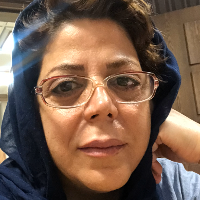Iconography of Qajar Women’s Clothing and Ornaments as Depictedin the Painting “The Lady with the Parrot” by Mehr Ali
The Qajar era painting has a particular position in the history of Iran’s art and portraiture is controversial as a prominent branch of painting during Fath Ali Shah’s sultanate period. As one of the main subjects of the painters in this era, women have been frequently portrayed with no veil (hijab) while wearing heavy make-up and a lot of jewelry. Mehr Ali is one of the proficient painters of this era that, besides portraying the king, has also portrayed a few of the Qajar women, as well. In the painting “the lady with the parrot” which is ascribed to Mehr Ali, a painter in Fath Ali Shah Qajar’s royal court, a kind of clothing style different from the common Qajar women’s, can be observed. REsearch
The present study aimed at analyzing the clothing and ornaments of the woman in Mehr Ali’s painting and their consistency with the hijab and ornaments commonly used by Qajar women from iconographical perspectives. To do so, efforts have been made to unravel the latent layers of aforementioned artwork via describing and analyzing the themes therein. The article seeks to figure out the reason why the woman has been portrayed in this painting with those ornaments and clothing.Research
The present study was carried out based on a qualitative (analytical-descriptive) method using content analysis. The study’s theoretical foundation was set based on Erwin Panofsky’s school of iconography and the required data was collected based on the documentary method and library research.
The study findings makes the audience familiar with a different type of female clothing that is less similar to the outfits commonly used by Qajar era’s women and no historical book has pointed thereto. The type of hijab depicted in Mehr Ali’s painting remind the audience of the Indian women’s clothing in Mughal (Gurkanian) era and the woman’s make-up style seem to be influenced by the literature and representation of its similes in painting.
- حق عضویت دریافتی صرف حمایت از نشریات عضو و نگهداری، تکمیل و توسعه مگیران میشود.
- پرداخت حق اشتراک و دانلود مقالات اجازه بازنشر آن در سایر رسانههای چاپی و دیجیتال را به کاربر نمیدهد.



